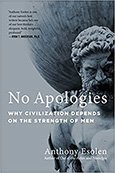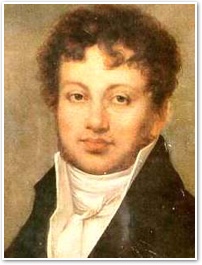How the Church has changed the World: Fields of Attraction
- ANTHONY ESOLEN
The boy, delicate in frame, approached his father in his study.
Join the worldwide Magnificat family by subscribing now: Your prayer life will never be the same!
He'd never been to school, and that was by design, for the father admired the writings of Jean-Jacques Rousseau, and wished to carry out that strange philosopher's recommendations about how to educate a child in liberty and justness of sentiment. It may be the only case I know when Rousseau did anybody any good.
"Father," he said, "I've run out of things to do. I need to read now the works of Bernoulli and Euler." The boy pronounced the latter name in French fashion. He was, after all, only eleven.
"Bernoulli and Euler?" the father beamed with pride. "Let's go to the library, then." Leonhard Euler, by the way, was the Bach of mathematics, a devout Lutheran who would make anyone's short list of the greatest mathematicians who ever lived.
When they had searched out the books, the boy looked up at his father and said, "But these are in Latin!"
"Yes," said the father, with a twinkle in his eye. He had known that already. "And if you want to understand them, you must learn the calculus."
The boy straightened up and declared, "Then I'll go back to my Latin and I'll teach myself the calculus!"
So, over the next few weeks, André-Marie Ampère, the father of what he would call electrodynamics — the interaction between electricity and magnetism — did just that.
The betrayal of the world
The boy's family was Roman Catholic, and he would say, long after, that his First Communion was one of the three crucial moments of his life. One of the others was when he read a book-length tribute to René Descartes. That shouldn't surprise us. Descartes' idealist philosophy, according to such critics as Étienne Gilson, has wrought untold confusion; but for a Catholic mathematician like Ampère there was much to admire: Descartes' undoubted genius, his commitment to reason, his moderation during decades of war, his early precocity, and, if we take him at his word, his faith in God and the Church.
The third was the storming of the Bastille. Here we should note how the world pays its own. The elder Ampère was a good man and a liberal, but when the French Revolution erupted he knew he was in trouble because he had money. He tried to escape the revolutionary wrath in Lyon, but the Jacobins took the city and Ampère's head met the guillotine.
That was in 1793, when André-Marie was a youth of eighteen. The shock nearly destroyed him. For a whole year he lay, according to the Catholic Encyclopedia, "in a state bordering on idiocy." He lost the capacity to speak. Reading jolted him out of it: a dour poem by Horace, recommending against ambition, even against being too prosperous, because thunderbolts strike the tall trees and the mountaintops, not the modest home; and some botanical letters by Rousseau. The former reminded him never to expect much good from fame and wealth in the world. The latter returned his mind to the sciences, to the sweet herbs and flowers.
Father and friend
We haven't been told exactly what that year of turmoil was like. Perhaps it was an agony of religious doubt, which he later said was the worst torment a man can suffer. He was no effete agnostic, pleasantly wondering about truth and not caring overmuch to find it. During dark times he returned to the Bible, and to the memory of his wife Julie, whom he loved dearly and who also died too young, leaving him with a little boy named Jean-Jacques, after Rousseau.
Ampère had to teach and work hard to support himself and his son. The teacher's habits lend themselves to method, but Ampère was by nature not methodical at all. He was a self-taught genius whose mind ranged across many disciplines, scientific, philosophical, psychological, and metaphysical. He was in that regard like Thomas Aquinas and unlike the "positivists" of his time. Though he was early recognized for his brilliance, he still didn't fit comfortably in the salons of those who believed that all was matter, and that you must not posit anything without first having observed it by experiment. Ampère's process was the reverse, like that of Einstein. You first have a flash of inspiration into some beautiful overarching possibility, and then you test it. Call it a leap of scientific faith.
Later in life, Ampère — about whom I can find nobody who ever said anything unkind — opened his home to a young student named Antoine-Frédéric Ozanam, now named Blessed Ozanam. He too had experienced as terror the doubts that arise from a fashionable and ugly world of unbelief, and when he returned to the Faith, he did so with an astonishing zeal. What might we give to overhear the conversations, for eighteen months, between the middle-aged physicist and the young man of letters, both devoted to the Lord, the physicist quietly and firmly, the youth with all the passion of self-sacrifice. It was Ozanam who, during that time, laid the foundations for the Society of Saint Vincent de Paul.
Ampère's son Jean-Jacques became a remarkable writer in his own right, and so it was that father and son corresponded with and invited to their home the great Catholic authors and intellects of those years. That included, in 1835, the year before Ampère's death, Alexis de Tocqueville, who had just published his first edition of Democracy in America, and who had begun a close and lifelong friendship with Jean-Jacques.
Turn the key
Yet I haven't said what made the name of André-Marie Ampère immortal in the annals of physics: the Newton of Electromagnetism, as James Clerk Maxwell called him.
Here I might pepper the texts with equations containing integrals along a closed curve, and our eyes would swim. Instead let's get into an automobile.
A combustion engine is a potent and dangerous device. You need to get the pistons moving, but the current that the motor requires would burn out any device for starting it. So instead you have something called a solenoid, a tube-shaped magnetic device; typically a coil of electrical wire through which a current is passed, bringing into effect a magnetic field. The solenoid imparts a charge to the engine, just enough to get the pistons moving, and then the magnetism closes circuits leading from the high-powered battery to the engine, at the same time as the solenoid itself is disengaged. Think of it as a way for a low-charge magnet to put a spark to a high-charge battery and engine, and then to cut out.
The word "solenoid" was coined by Ampère, from the Greek solen, "tube." He invented the basic thing.
Ampère's greatest discoveries lay in connecting electricity with magnetism. He found that if you passed electric current through a coiled wire, the current would act as a magnet, whose waves of attraction and repulsion observed clear patterns. He and his correspondent-friend, fellow physicist (and himself a Christian preacher) Michael Faraday, did the lion's share of work in the field; and, long before Edison, Ampère drew up plans for a telegraph, with one wire to represent each letter in the alphabet.
I trust that this contribution will not seem modest! Look about you, reader. Aside from the skies, the trees, the birds, and the squirrels, everything will have some relation to electricity and to Ampère's work. We quarrel about whether to use coal, oil, gas, wind, falling water, or radioactive atoms to produce "power." All of it, whatever the source — all is used, if I may simplify, to provide motive power to generate electricity within some machine made of conductive wires or sheaths and magnets.
That is why the current delivered to your home is measured in "amps" — Ampères. It is also why Ampère's name is one of the seventy-two that are engraved upon the Eiffel Tower.
Man of prayer
"O Lord, God of Mercy," wrote Ampère on the day his wife Julie died, "unite me in heaven with those whom you have permitted me to love upon earth." He married again, unhappily, and seemed for a time to lose the Faith of his childhood. But he returned to it with passion and conviction, just at the time when he was to do his greatest scientific work. I can do no better than to site the man himself (quoted from James R. Hofmann's Andre-Marie Ampere: Enlightenment and Electrodynamics):
"My God, what are all these silences, all these reasonings, all these ingenious discoveries and vast conceptions that the world admires and that our curiosity feasts upon so avidly?... In truth nothing but vanity … Study the things of this world, that is the duty of your station, but consider them only with a single eye let your other eye be steadily fixed upon the eternal light! … Write with only one hand! Hold tightly with the other to God's raiment like a child clinging to his father's cloak."
If such a man says so, who are we to demur?
 This is Meaghen Gonzalez, Editor of CERC. I hope you appreciated this piece. We curate these articles especially for believers like you.
This is Meaghen Gonzalez, Editor of CERC. I hope you appreciated this piece. We curate these articles especially for believers like you.
Please show your appreciation by making a $3 donation. CERC is entirely reader supported.

Acknowledgement
 Anthony Esolen. "How the Church has changed the World: Fields of Attraction." Magnificat (October, 2018).
Anthony Esolen. "How the Church has changed the World: Fields of Attraction." Magnificat (October, 2018).
Join the worldwide Magnificat family by subscribing now: Your prayer life will never be the same!
To read Professor Esolen's work each month in Magnificat, along with daily Mass texts, other fine essays, art commentaries, meditations, and daily prayers inspired by the Liturgy of the Hours, visit www.magnificat.com to subscribe or to request a complimentary copy.
The Author

Anthony Esolen is writer-in-residence at Magdalen College of the Liberal Arts and serves on the Catholic Resource Education Center's advisory board. His newest book is "No Apologies: Why Civilization Depends on the Strength of Men." You can read his new Substack magazine at Word and Song, which in addition to free content will have podcasts and poetry readings for subscribers.
Copyright © 2018 Magnificat




